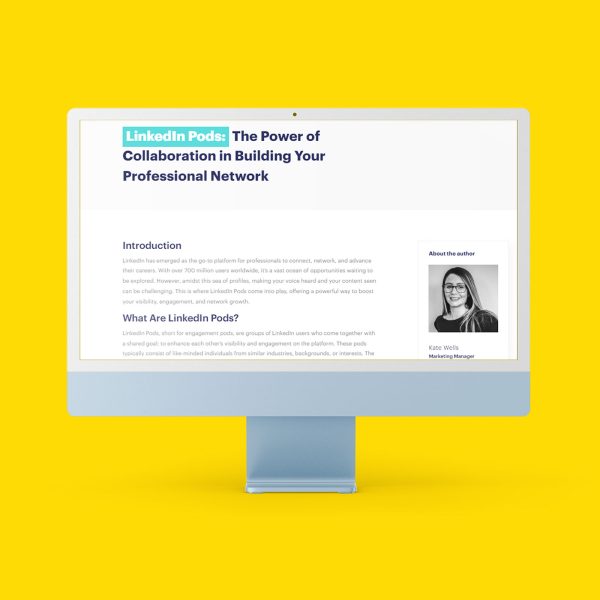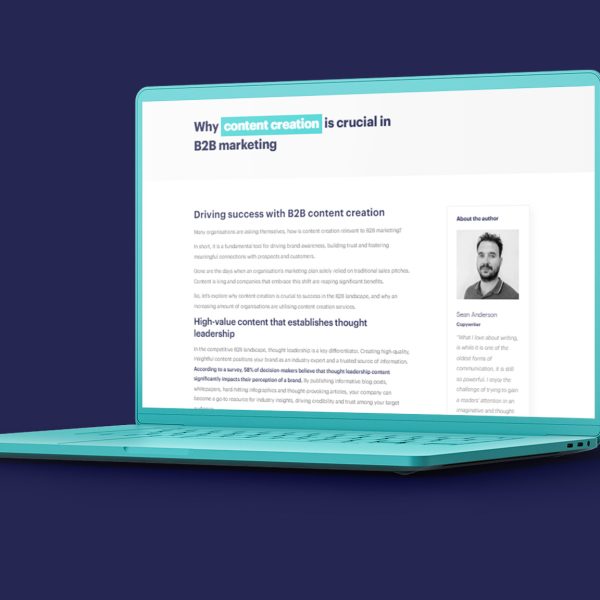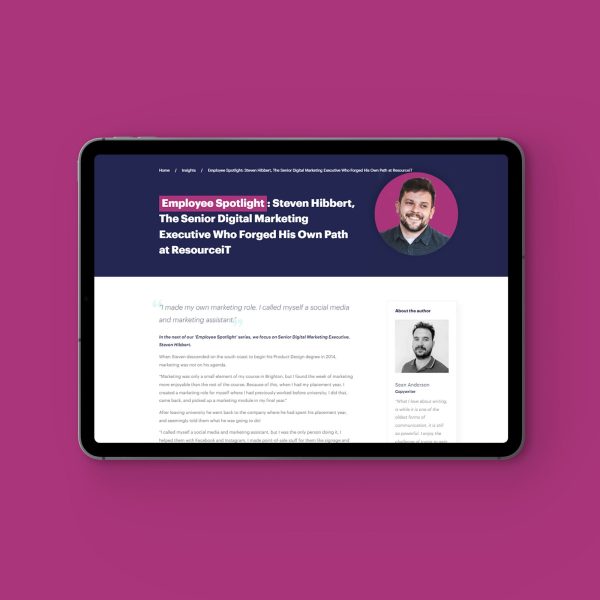We can hear the outraged client cries now: “You want us to pay for content that’s not going to be seen by everyone?!” Yes. Going viral isn’t all it’s cracked up to be.
It might sound counterintuitive, but we actually apply this approach to most of the marketing content we create – it’s not about getting the most eyeballs but the right eyeballs. Visibility is great for awareness, of course, but would you rather have a thousand views or a hundred warm leads? Targeting those who are genuinely interested in your content is beneficial to them and you.
And LinkedIn’s algorithm feels the same way.
Become the bot’s bestie
Every time you post something on LinkedIn, whether it’s a thought leadership masterpiece or a moan about the office temperature, it is categorised on a scale of superb to spam (that’s not the exact terminology, but you get the idea). Assuming your post passes this initial test, it is then monitored after being shown to a small group of viewers, most likely those in your immediate network. If all goes well here and people engage with your content, it stands a better chance of being shown to a wider audience.
In basic terms, LinkedIn wants people to be reading, liking and sharing your material. It wants it to be fresh, and it wants it to be well put together, including images and a suitable number of words. But, even if you tick all those boxes with your content, it doesn’t mean it will suddenly be thrust onto every user’s feed.
At this stage, LinkedIn acts like a great conversationalist at a drinks party. They don’t tell just any old story, they handpick those that will be the most captivating based on who it is they’re talking to. Using information gathered previously, the algorithm then pushes your content to those it believes will enjoy or take value from it. It learns this using data collected from the post itself, previous engagement activity and the roles, interests and industries that similar content previously chimed with. From a marketing standpoint, this means hitting your target audience.
Know your audience and the rules
When approaching a LinkedIn PPC campaign, we take into consideration not only the type of people the post should resonate with but also how engaging the content is. We develop the angle, use relevant keywords and think about fresh ways to not only make the material sing but provide value. The result is a post the intended audience wants to read, will comment on and feel compelled to share.
Knowing all this helps avoid common pitfalls too. If engagement among an initial small group is what LinkedIn wants, you might be tempted to get a bunch of friends or colleagues to like and comment on your post. LinkedIn’s wise to this type of crowd-sourced engagement, however, especially if the comments are somewhat empty. “Nice!” “OMG!” and “#Inspiring” won’t cut it. LinkedIn is looking for real conversation. Similarly, LinkedIn looks at the poster and their experience to determine whether they know what they’re talking about on a given topic. It’s why you’ve probably never seen any of our posts on interior decoration.
Ultimately, it’s not so much about going viral as it is about going micro-viral. Big in the areas that your post makes sense, not across a huge swathe of people with no interest in your topic or opinion on it. Speaking to a room full of interested attendees at a relevant event should be the level to aim for, not attempting to do the same in front of a stadium crowd expecting to see Ed Sheeran.
The ever-changing algorithm
Following the guidance above should stand you in good stead if your content is of decent quality, but they’re not hard and fast rules and they’re always evolving. LinkedIn can be a fickle beast. It’s why marketers like us always need to be on our toes to stay on top of the last algorithmic alterations. Ensuring consistent success requires constant adaptation, adjusting not only what’s written about but how it’s written, when it’s posted and who it appeals to.
Recent updates to the LinkedIn algorithm include:
- Increased likelihood that your followers will see your posts.
- The prioritisation of posts that are adjudged to include knowledge and advice.
- Classifying posts based on content and the audience they might appeal to.
Changes like these are good for users of the platform, but they also require shifts in the way people post. Creating as much LinkedIn content for our clients as we do, means we must have our finger firmly on the pulse and adopt a flexible approach. By following LinkedIn’s official channels, attending the right webinars and drinking with talking to the right people, we’re normally well-placed to pivot should a change arise. However, we also audit ourselves, continually reviewing our work to define what’s working and what’s not on social media.
In researching this blog, we found a huge number of articles focused on ‘beating’ the LinkedIn algorithm. At ResourceiT, we don’t see it as such a combative task. It’s our job and creative challenge to keep up with the trends, understand what works and create content that resonates with our clients’ target audiences.
That’s what they pay us for.
Is your LinkedIn content reaching the right audience? We’re ready and waiting to develop your perfect campaign. Find out more here and get in touch to discuss your social media marketing needs today.




